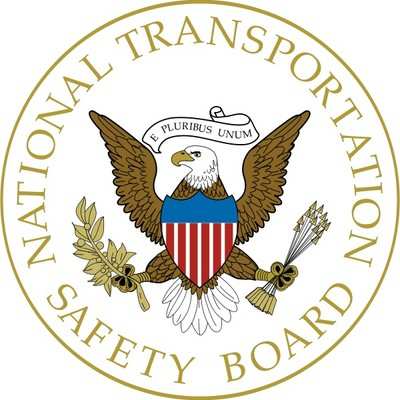Pilot Informed The Controller Of A “Dead Cylinder” And Requested To Proceed To HPN
Location: North Castle, NY Accident Number: ERA23FA113
Date & Time: January 19, 2023, 17:29 Local Registration: N19MT
Aircraft: Beech A36 Injuries: 2 Fatal
Flight Conducted Under: Part 91: General aviation - Personal

On January 19, 2023, about 1729 eastern standard time, a Beech A36, N19MT, was substantially damaged when it was involved in an accident near North Castle, New York. The private pilot and one passenger were fatally injured. The airplane was operated as a Title 14?Code of Federal Regulations Part 91 personal flight.
The purpose of the accident flight was to fly from John F Kennedy International Airport (JFK), New York, to Cuyahoga County Airport (CGF), Cleveland, Ohio. According to Federal Aviation Administration (FAA) Automatic Dependent Surveillance – Broadcast (ADS-B) data and air traffic control audio information, the flight departed on an instrument flight rules clearance from runway 4L at JFK and proceeded northeast. At 1715:54, while flying in a west-northwest direction about 5,000 ft mean sea level (msl) climbing to 8,000 ft msl, the pilot asked the controller if he could stop the climb, which was approved. At 1716:15 and again at 1716:34, the pilot advised the controller that the airplane was experiencing poor flight performance. The pilot subsequently advised the controller that no anomalies were depicted on the airplane’s instrumentation. The controller advised the pilot that Westchester County Airport (HPN), White Plains, New York, was nearby, but there was no response from the pilot. At
1718:31, the pilot informed the controller of a “dead cylinder” and requested to proceed to HPN. The controller vectored the airplane towards HPN and instructed the pilot that the instrument landing system (ILS) runway 16 approach was in-use. At 1719:53, the controller asked the pilot if he was declaring an emergency to which he replied he was not. The flight remained on the west-northwest heading until 1721:07, at which time it turned to a northerly heading consistent with the vector. At 1721:18, when the flight was southwest of HPN, the pilot declared an emergency and advised the controller that the engine oil pressure was dropping. Shortly thereafter, the airplane began a right turn and the controller informed the pilot to level the wings and maintain 5,000 ft msl. The flight proceeded on a northeast heading then at 1723:04, while flying at 5,200 ft msl, the pilot again declared an emergency and indicated that the engine was losing oil pressure.
The controller instructed the pilot to fly heading 070° for vectors onto the downwind leg of the airport traffic pattern for runway 16 at HPN. At 1724:22, the airplane was east of HPN, consistent with being on the downwind leg of the airport traffic pattern. At 1725:13, while flying northeast of HPN at 4,500 ft msl, the pilot broadcast, “mayday mayday mayday mayday.” The controller informed the pilot that HPN was behind the airplane and to turn left or right as necessary. The flight continued on a northerly heading until 1725:54, at which time the airplane had descended to 3,600 ft msl and turned left to a southwest heading. The pilot was cleared to land at 1727:49. About 16 seconds later, the controller informed the pilot that he should be clear of the cloud ceiling at 300 ft. The controller informed the pilot of the airplane’s direction and distance from HPN as the airplane descended, and the pilot acknowledged during his last transmission at 1728:23. The airplane at that time
was about 1.6 miles from HPN at 800 ft msl. At 1728:43, the controller transmitted that radar contact was lost. The airplane crashed on water supply land, owned by the City of New York. Examination of the accident site area revealed that the airplane first impacted a tree about 100 ft above ground level (agl). Multiple tree contacts at slightly generally decreasing heights were noted on a magnetic heading of 179° until the main wreckage came to rest about 250 ft from the initial tree strike.
Fresh oil was noted on the bottom of the fuselage beginning just aft of the wing root and extending to the tail cone. In addition, fresh oil was observed at the outlet of the lower crankcase breather line. Examination of the engine revealed a hole in the top of the crankcase in-line with the No. 6 cylinder position. A deformed connecting rod cap with two fractured and entrapped connecting rod bolts was found inside the engine adjacent to the hole. The engine was retained for further examination. In addition, an engine monitor, a Stratus 3 ADS-B receiver, three portable electronic devices, and two Garmin G5 electronic flight instruments were retained for potential data download.
 ANN FAQ: Contributing To Aero-TV
ANN FAQ: Contributing To Aero-TV Aero-News: Quote of the Day (12.10.25)
Aero-News: Quote of the Day (12.10.25) ANN's Daily Aero-Term (12.10.25): North Atlantic High Level Airspace (NAT HLA)
ANN's Daily Aero-Term (12.10.25): North Atlantic High Level Airspace (NAT HLA) Airborne 12.08.25: Samaritans Purse Hijack, FAA Med Relief, China Rocket Fail
Airborne 12.08.25: Samaritans Purse Hijack, FAA Med Relief, China Rocket Fail Airborne-Flight Training 12.04.25: Ldg Fee Danger, Av Mental Health, PC-7 MKX
Airborne-Flight Training 12.04.25: Ldg Fee Danger, Av Mental Health, PC-7 MKX



